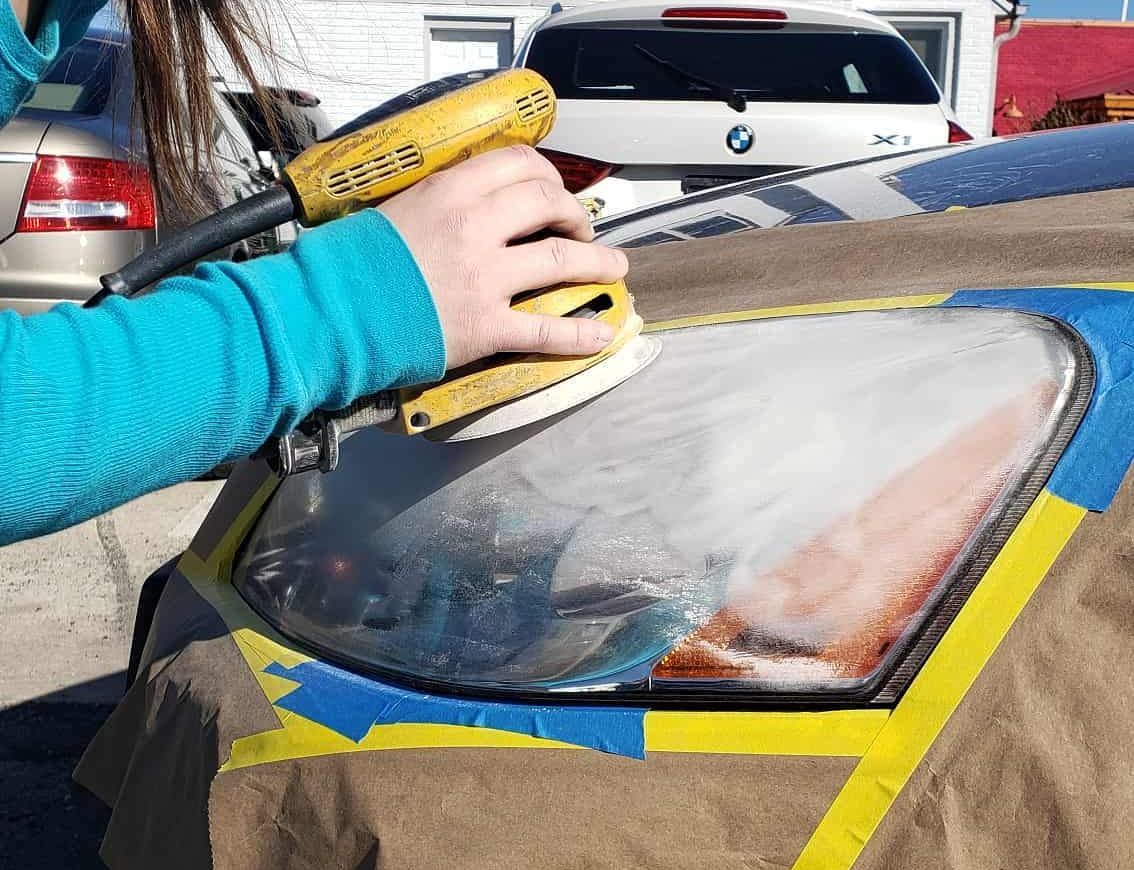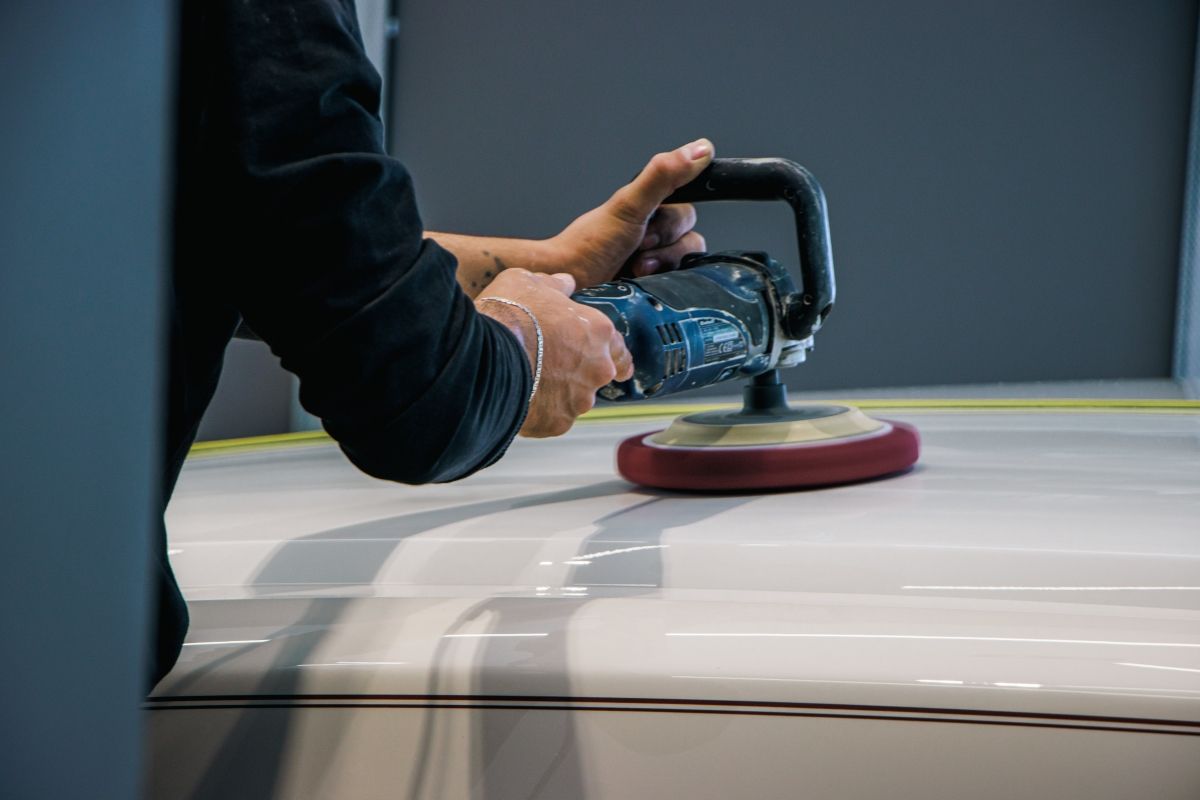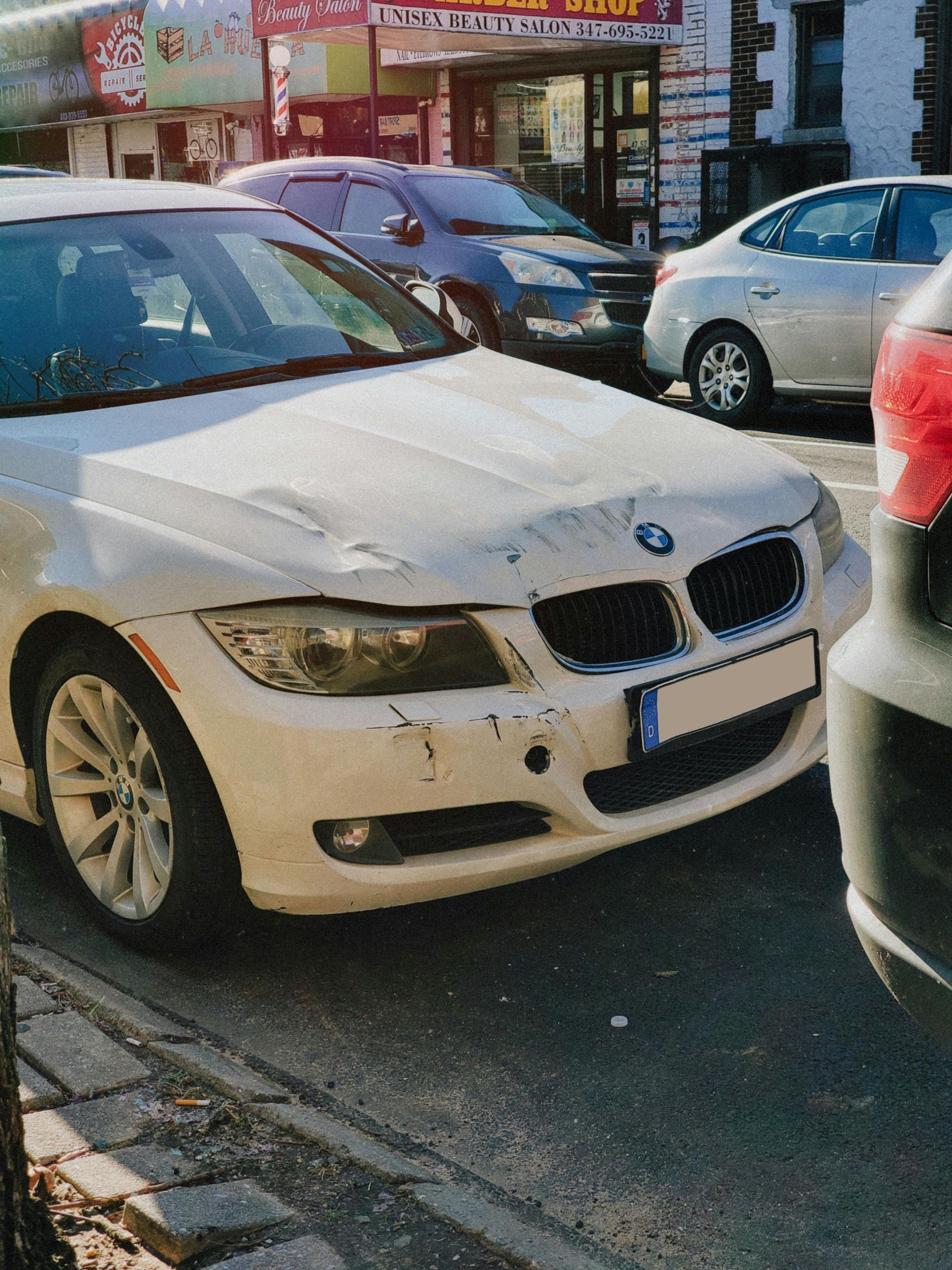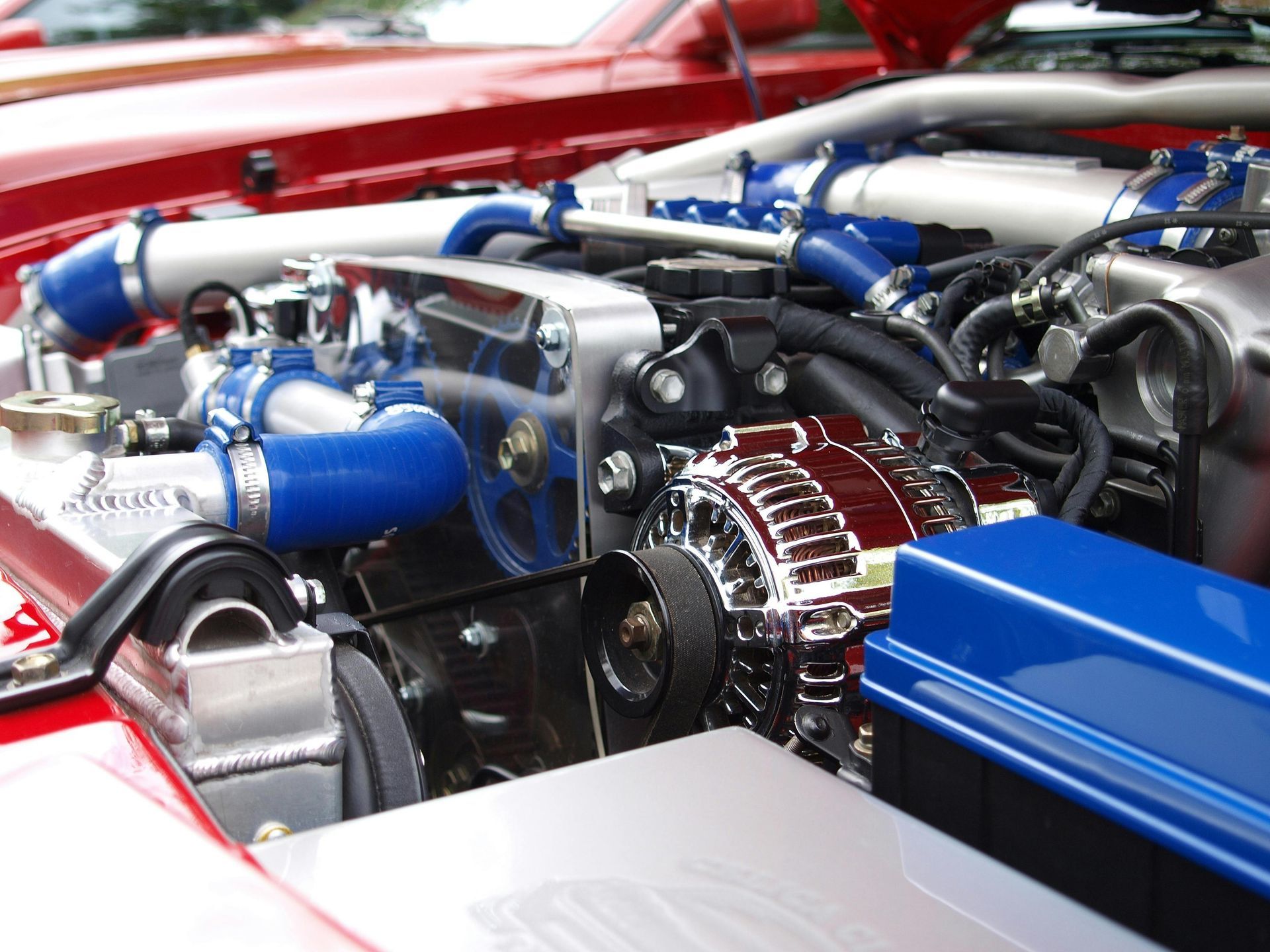
Common Types of Collision Damage and How Our Repair Services Help
Car accidents happen when you least expect them, leaving behind dents, scratches, or even serious structural damage. Whether it’s a minor fender bender or a major collision, knowing what type of damage your car has is the first step toward getting it fixed.
At our auto body repair shop in Rock Hill, we specialize in restoring vehicles to their pre-accident condition. From paintless dent repair (PDR) to full-frame realignment, we have the expertise to handle all types of collision damage. In this guide, we’ll break down the most common types of collision damage and explain how professional repair services can get your car back on the road safely.
What Are the Common Types of Collision Damage?
Not all car accidents cause the same type of damage. Some leave behind small dents and scratches, while others can bend the frame of your vehicle. Understanding these damages can help you determine the right repair solution.
Understanding Types of Auto Body Damage
Auto body damage can range from cosmetic issues to serious structural problems. The most common types include:
- Dents and Dings – Small indentations caused by minor impacts, such as shopping carts or door dings.
- Scratches and Scuffs – Surface-level damage that affects your car’s paint, often from scrapes or keying.
- Panel Damage – Crushed or bent panels due to collisions, affecting fenders, doors, or quarter panels.
- Glass Damage – Cracks or shattered windows and windshields from impacts.
Each of these damages affects your vehicle differently, and some may require more extensive repairs than others.
Identifying Minor Fender Benders
Fender benders are one of the most common types of accidents, typically occurring at low speeds in parking lots or stop-and-go traffic. The damage may seem small, but it can still impact your car’s appearance and safety.
Signs of fender bender damage:
- Scratched or dented bumpers
- Misaligned panels
- Broken headlights or taillights
Even minor fender benders can cause hidden problems, like misalignment, that may lead to uneven tire wear or steering issues.
Recognizing Structural Damage
Structural damage is more serious and can compromise your car’s safety. It happens when the frame or chassis absorbs the impact of a collision.
How to tell if your car has structural damage:
- Uneven gaps between panels
- Doors or trunk not closing properly
- Visible frame bending or crumpling
A damaged frame can weaken your car’s ability to protect you in another accident. That’s why professional repairs are crucial to ensure your vehicle is structurally sound.
How Do Repair Services in Rock Hill Address Collision Damage?
After a collision, getting your car repaired quickly and correctly is essential for both safety and appearance. Professional auto body repair services in Rock Hill handle everything from minor dents to major structural fixes. Understanding the repair process can help you know what to expect when you take your car in for service.
The Repair Process for Different Types of Damage
Each type of damage requires a specific repair approach. Here’s how professionals restore your vehicle:
- Dent Removal – Small dents and dings can often be fixed using paintless dent repair (PDR), which keeps your factory paint intact.
- Panel Replacement – If a panel is too damaged to repair, it may need to be replaced with a new one.
- Frame Straightening – A bent frame can be realigned using specialized machines that restore structural integrity.
- Bumper Repair – Depending on the severity, bumpers can be repaired with plastic welding, reshaping, or full replacement.
- Paint Restoration – Scratches and chipped paint are fixed with color-matched repainting and clear coat application.
The goal of professional repair services is to restore your vehicle’s original look and performance, ensuring it is safe to drive again.
Role of Mobile Technicians in Collision Repair
Mobile repair technicians bring the auto body shop to you, offering convenient services for minor damage. Instead of waiting days at a shop, mobile techs can fix small dents, scratches, and paint touch-ups right in your driveway or workplace.
Services typically offered by mobile repair techs:
- Paintless dent repair (PDR)
- Scratch and scuff removal
- Bumper touch-ups
- Headlight restoration
While mobile repair is effective for minor fixes, major collision damage still requires a full-service auto body shop.
Advantages of Mobile Auto Body Repair
If your damage is minor, mobile repair services offer several benefits:
- Convenience – No need to drop off your car at a shop.
- Faster Repairs – Many fixes take just a few hours.
- Cost-Effective – Often cheaper than traditional auto body repair.
- No Need for a Rental Car – You can go about your day while your car is fixed on-site.
However, serious collision damage like frame misalignment or deep dents requires professional shop repairs to ensure safety and quality.
What Types of Paint Damage Occur During Collisions?
Collisions don’t just dent metal—they can also damage your car’s paint. Even minor accidents can lead to scratches, chips, and peeling, which can affect your vehicle’s appearance and expose the metal underneath to rust and corrosion.
Common Types of Paint Damage and Their Causes
Paint damage varies depending on the impact and surface contact. Here are the most common types:
- Scratches – Caused by scraping against objects like curbs, guardrails, or other vehicles.
- Chipped Paint – Happens when debris or small impacts remove layers of paint, exposing the bare metal.
- Scuffed Paint – Occurs when another object rubs against the surface, leaving marks that don’t penetrate deep into the paint.
- Peeling or Flaking – Often a result of poor previous repairs or prolonged exposure to harsh weather.
Ignoring paint damage can lead to further deterioration, making your car more vulnerable to rust and lowering its resale value.
Effective Repair Techniques for Paint Damage
Professional auto body shops use several methods to restore damaged paint:
- Touch-Up Painting – For small chips or minor scratches, technicians apply color-matched paint to cover the affected area.
- Buffing and Polishing – Light scratches and scuffs can often be removed by buffing and polishing the surface.
- Spot Blending – If a section of paint is damaged, blending the new paint into the surrounding area ensures a seamless match.
- Full Panel Repainting – When large areas are scratched or chipped, the entire panel may need repainting to restore a flawless finish.
High-quality paint repair not only restores your car’s appearance but also provides a protective layer against further damage.
How Is Bumper Damage Repaired?
Bumpers are designed to absorb impact, which is why they often take the brunt of a collision. Whether it’s a small dent or a severe crack, bumper damage can affect both appearance and safety. Repairing it properly ensures your car remains structurally sound and visually appealing.
Assessing the Extent of the Damage to Your Bumper
Before repairs begin, technicians evaluate the bumper to determine whether it needs repair or replacement.
Signs that a bumper can be repaired:
- Minor dents or scuffs that don’t compromise its structure
- Surface-level scratches that only affect the paint
- Small cracks or warping that can be reshaped
When a bumper needs replacement:
- Severe cracks or splits that weaken its integrity
- Broken clips or fasteners that make it difficult to reattach
- Extreme deformation that cannot be reshaped
If the damage is primarily cosmetic, a repair is usually the best option. However, if the bumper no longer provides proper protection, a replacement is necessary.
Techniques for Professional Auto Body Repair of Bumpers
Auto body shops use several techniques to restore damaged bumpers, depending on the severity of the damage:
- Paintless Dent Repair (PDR) – Used for minor dents, PDR removes imperfections without repainting.
- Plastic Welding – For cracked plastic bumpers, technicians use plastic welding to bond the material back together.
- Reshaping and Filling – Heat reshaping techniques fix minor warping, while fillers smooth out surface imperfections.
- Repainting and Refinishing – If the bumper’s paint is damaged, a fresh coat is applied, ensuring a seamless blend with the rest of the car.
Proper bumper repair restores both function and aesthetics, ensuring your vehicle remains protected in future collisions.
Can Paintless Dent Repair Fix All Types of Dents?
Paintless dent repair (PDR) is a popular and cost-effective way to fix dents without the need for repainting. However, it is not a one-size-fits-all solution. Some dents can be removed using PDR, while others require traditional body shop repairs.
Understanding Paintless Dent Repair Techniques
PDR works by gently massaging the dented area back into shape without disturbing the original paint. It is most effective for:
- Small to medium-sized dents with no paint damage
- Hail damage or door dings
- Dents caused by minor collisions where the metal isn’t stretched
The process involves using specialized tools to access the dent from behind the panel, slowly restoring the metal to its original position. Since no sanding or repainting is involved, PDR is faster and more affordable than traditional repairs.
When to Opt for Traditional Body Shop Methods Instead
While PDR is highly effective, it has limitations. Some types of damage require traditional auto body repair, such as:
- Dents with deep creases or sharp edges
- Dents where the paint is cracked, chipped, or scratched
- Large or stretched dents that have permanently deformed the metal
- Dents near the edges of panels where access is limited
For these cases, a body shop may use filling, sanding, and repainting to fully restore the vehicle’s appearance. If PDR is not an option, professional repair technicians will recommend the best approach to ensure a flawless finish.
How Does Frame Damage Impact Vehicle Safety?
Frame damage is one of the most serious types of collision damage. When a vehicle’s frame is bent, twisted, or cracked, it can compromise structural integrity and overall safety. Even if the exterior looks fine, a damaged frame can lead to long-term issues with handling, alignment, and crash protection.
Identifying Frame Damage from Collisions
Not all frame damage is immediately visible. Some signs that your vehicle may have sustained structural damage include:
- Uneven gaps between doors, hood, or trunk
- Car pulling to one side while driving
- Strange noises like creaking or groaning from the frame
- Misaligned wheels or difficulty steering
- Visible bending or warping of the frame
A bent frame can affect how your car handles, making it unsafe to drive. Even a small misalignment can cause excessive tire wear, poor suspension performance, and reduced crash protection.
The Impact of Frame Damage on Vehicle Performance
Frame damage doesn’t just affect safety—it also impacts how your car drives. A misaligned frame can cause:
- Poor handling and stability – The car may feel unstable at high speeds.
- Reduced fuel efficiency – Increased resistance due to misalignment forces the engine to work harder.
- Compromised crash protection – The frame is designed to absorb impact in an accident. If it’s weakened, future collisions could be much more dangerous.
How Frame Damage is Repaired
Auto body shops use frame straightening machines to realign the metal structure to its original shape. The process involves:
- Measuring the frame with computerized tools to identify misalignment
- Using hydraulic machines to pull the frame back into place
- Welding and reinforcing damaged sections to restore strength
Proper frame repair ensures that your car remains safe and performs as intended. If the damage is too severe, some vehicles may be considered totaled because repairing the frame could be unsafe or too costly.
Conclusion
Collision damage can range from minor dents to severe frame issues, but no matter the extent, getting professional repairs is crucial for both safety and appearance. From paintless dent repair for small dents to full-frame realignment for major accidents, understanding your repair options ensures your vehicle gets the right treatment. Ignoring damage—even small scratches or bumper dents—can lead to bigger problems like rust, misalignment, and reduced crash protection.
If your vehicle has been in an accident, trust the experts at Mobile Brewer to restore it to pre-collision condition. Serving Rock Hill, Lake Wylie, Fort Mill, and Charlotte, Mobile Brewer offers auto body repair, bed liners, auto detailing, odor removal, and headlight restoration. Whether you need a quick dent fix or a full auto body repair, their team delivers professional, high-quality results.
Contact Mobile Brewer today to schedule an appointment and get your car looking and performing its best!
Frequently Asked Questions
What are the most common types of collision damage?
Common types of collision damage include dents, scratches, cracks, and paint chips. Each type of damage may require a different repair approach to restore the vehicle to its original condition.
How can an auto body shop help with a scratch on my car?
An auto body shop can repair scratches by sanding the affected area, using paintless dent repair techniques, or repainting to ensure a seamless finish. This helps in restoring the car's appearance without the need for extensive body work.
What should I do if my car gets a crack from a minor collision?
If your car gets a crack from a minor collision, it's important to visit a repair shop promptly. Technicians use specialized techniques to repair small cracks, which can prevent further significant damage.
Can I perform DIY repair for minor collision damage?
While minor collision damage like small dings can sometimes be fixed with DIY repair kits, more severe damage should be handled by professionals to ensure a seamless repair and maintain the vehicle's safety standards.
What is the impact of weather damage on my car's body?
Weather damage can cause paint chips, scratches, and other types of damage to your car's exterior. Mobile body repair services offer a comprehensive guide to mobile body repair, ensuring your car is protected against harsh weather conditions.
How does suspension damage affect my vehicle?
Suspension damage can lead to significant issues, affecting your vehicle's handling and safety. A traditional body shop may inspect and repair suspension components to restore the car's functionality and alignment.
How do mobile repair services compare to traditional auto body shops?
Mobile repair services provide convenience by coming to your location and often using innovative techniques like paintless dent repair. They can handle various repairs, from minor dings to more extensive damage, without the need for a visit to a traditional body shop.
What are the benefits of using paintless dent repair?
Using paintless dent repair techniques allows for the removal of dents without repainting, preserving the vehicle's original finish. It is a cost-effective and efficient method for minor collision damage that ensures a seamless repair.
How can damage caused by a shopping cart be repaired?
Damage caused by a shopping cart, such as dents and scratches, can be repaired using body filler and dent removal techniques. Visiting an auto body shop can ensure the affected area is restored to its original condition.


